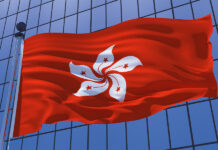Since the China Food and Drug Administration, the General Office of the Central Committee of the Communist Party of China and the General Office of the State Council have all proposed to explore the establishment of a drug patent linkage system in China in 2017, it has been a hot topic in the field of pharmaceutical patents.

Partner
Jingtian & Gongcheng
The latest revision of the Patent Law was passed on 17 October 2020, in which article 76 provided the legal basis for the litigiousness and administrative adjudication of disputes arising from patent rights related to drugs under application for registration.
The Law came into force on 1 June 2021. On 4 July 2021, the National Medical Products Administration (NMPA) and China National Intellectual Property Administration (CNIPA) issued the Measures for Implementation of the Early Resolution Mechanism for Drug Patent Disputes (Trial) (implementation measures), which took effect on the same day. Also on the same day, the Supreme People’s Court promulgated the Provisions on Several Issues Concerning the Application of Laws in the Trial of Civil Cases of Patent Disputes Related to Drug under Application for Registration (judicial interpretation), which came into force the next day.
On 5 July 2021, the CNIPA issued the Measures for Administrative Adjudication of the Early Resolution Mechanism for Drug Patent Disputes (administrative adjudication measures), which came into effect on the same day. Previously, the Patent Information Registration Platform for Drugs Marketed in China had been put into operation.
China’s early resolution mechanism for drug patent disputes has been preliminarily completed, and mainly includes: A platform construction and information disclosure system; patent registration system; generic drug patent declaration system; judicial and administrative linkage systems; approval waiting period system; drug review and approval classification system; and market exclusivity system of the first generic drug.
The mechanism for early resolution of drug patent disputes has established a connecting channel between drug registration and drug patent, which is intended to resolve possible patent disputes before the marketing of generic drugs. The information disclosure and patent registration system and generic drug patent declaration system provide the obligations of drug licence holders and licence applicants at registration and application for drugs, which is the basis of the follow-up linkage system and approval system.
The judicial and administrative linkage systems are intended to solve possible patent disputes between the two parties, while the drug review and approval classification system, the approval waiting system and the exclusivity system reflect the influence of the results of patent dispute treatment and patent validity on the application for drug registration. In this article, the author comments on the main points of each system.
Registration and disclosure system
Registration subject. The marketing authorisation holders (MAHs) for chemical drugs, traditional Chinese medicine (TCM) and biological products shall register relevant information on the above-mentioned registration platform within 30 days of obtaining the drug registration certificate, and shall update it in time.
Types of registered patents. Chemical drugs can be registered with a patent on active pharmaceutical ingredient compounds, a patent on pharmaceutical compositions containing active ingredients, and a medical use patent. TCM can be registered with a TCM composition patent, TCM extract patent, and medical use patent. Biological products can be registered with a patent on sequence structure of active ingredients, and a medical use patent. Patents on intermediates, metabolites, crystal forms, preparation methods and detection methods are not registrable.
Registration content. This includes the drug name, dosage form, specification, MAH, relevant patent number, patent name, patentee, patent licensee, patent authorisation date and expiration date of the protection period, patent status, patent type, correspondence between drugs and related patent claims, mailing address, contact person and contact information. The registration information shall be consistent with the relevant information of patent register, patent gazette and drug registration certificate. The patent right for medical use shall be consistent with the indications or functional indications of the approved drug instructions. The scope of protection of relevant patents covers the corresponding technical schemes of approved drugs.
Effectiveness of registration. Registration information is the basis of the follow-up judicial and administrative linkage procedures. If relevant patent information is not registered on the platform, the early resolution mechanism of drug patent disputes is not applicable. The MAH of drugs shall be responsible for the authenticity, accuracy and completeness of their registration information.
Patent declaration of generic drugs
Declaration subject. When submitting an application for drug marketing authorisation, an applicant for chemical generic drugs or TCM with the same name and the same prescription, and biosimilar, shall make a declaration according to the patent information disclosed by the platform.
Classes of declaration. The declarations are divided into four classes:
(1) Class I declaration indicates that there is no patent information related to generic drug on the platform;
(2) Class II declaration indicates that the generic drug-related patents included on the platform have been terminated or declared invalid, or the generic drug applicant has obtained the relevant patent implementation licence;
(3) Class III declaration indicates that the generic drug applicant promises that the generic drug applied for before the expiration of the patent related to generic drugs included on the platform will not be marketed temporarily; and
(4) Class IV declaration indicates that the patents related to generic drug included on the platform should be declared invalid, or their generic drug does not fall within the scope of protection of related patents.
Other obligations of the declarant. In addition to disclosure on the platform, generic drug applicants should inform the marketing licensor of the declaration and the basis of the declaration by mail and e-mail. For the generic drugs in a class IV declaration that do not fall within the scope of patent protection, the declaration basis shall include the claim comparison table and relevant technical data.
Judicial, administrative linkage
For a class IV declaration by the applicant for drug marketing authorisation, the above-mentioned implementation measures provide the patent linkage system, and the judicial interpretation and administrative adjudication measures further refine the judicial linkage system and the administrative linkage system, respectively.
Judicial and administrative dual-track system. The patentee or interested party may, within 45 days from the date when the application for drug marketing authorisation is made public, file a lawsuit with the Beijing Intellectual Property Court, or request an administrative adjudication from the CNIPA on whether the relevant technical scheme of the drug under application for marketing falls within the scope of patent protection.
If the patentee or interested party fails to file a lawsuit or request an administrative adjudication within the prescribed time limit, the generic drug applicant may file a lawsuit or request an administrative adjudication. The CNIPA will no longer accept drug patent disputes that have been accepted by the court. The acceptance of the request for administrative adjudication does not affect the acceptance and trial by the court. Any person that is dissatisfied with the administrative adjudication may bring a lawsuit to the court.
The behaviour targeted by a case. Different from the “proposed infringement” of the drug linkage system in the US, the Patent Law does not propose the application for drug marketing as an infringement of patent rights, but provides that if a dispute arises over the patent right related to the drug registration application, the party involved may request to make a judgment/ruling on whether the technical scheme related to the drug under application for registration falls within the scope of patent protection of others.
This raises the question: Can other defences that do not constitute infringement or are not deemed as infringement in the Patent Law be applied to judge whether it falls within the scope of patent protection?
The judicial interpretation clarifies that if the prior art defence and the priority right defence are established, it can be judged that the technical scheme related to the drug under application for registration does not fall within the scope of patent protection. As the prior art defence and the priority right defence are based on the fact that the sued technical scheme falls within the scope of patent protection, it remains to be considered whether it is applicable in the absence of provisions in the administrative adjudication measures.
Parties to a case. The applicant requesting confirmation that the relevant technical scheme falls within the scope of relevant patent protection is the patentee or interested party. Interested parties refer to licensees of related patents or registered MAH of the drug. According to relevant judicial interpretations and administrative adjudications on patent infringement disputes, the licensees shall include the licensee of exclusive license, the licensee of sole license in the absence of the patentee suing/requesting, and the general licensor stipulated in the contract.
The applicant requesting confirmation that the relevant technical scheme does not fall within the scope of relevant patent protection is the applicant for the drug marketing authorisation, and the administrative adjudication measures provide that the respondent of an administrative adjudication is the patentee, while the judicial interpretation does not include any such specification.
Influence of patent invalidation procedure on a case. If a party requests invalidation of a patent involved, the CNIPA may continue the handling of the case, and the court generally does not suspend the proceedings. If all the claims involved in the patent involved are declared invalid by the CNIPA, the administrative adjudication measures provide that the request for administrative adjudication shall be rejected, but the judicial interpretation does not provide for such an issue. According to the relevant judicial interpretation and practice, the court has the discretion to reject the prosecution.
Obligations of the parties. As a case involves the technical scheme provided by the applicant for drug marketing authorisation, and probably involves technical secrets, both judicial interpretation and administrative adjudication measures specifically mention the obligation of the parties to truthfully provide evidence and provide that the parties have an obligation to keep confidential the commercial secrets they know in the litigation/administrative adjudication proceeding.
Other provisions. The judicial interpretation also includes relevant provisions on behaviour preservation in litigation and malicious litigation by patentees or interested parties.
Classification, approval waiting period
Classification review and approval, and waiting period of chemical generic drugs. For the application for registration of class I and II declarations, a decision on whether to approve the marketing shall be made according to the conclusion of the technical review. For the application for registration of a class III declaration, if the technical review is passed, the decision to approve the marketing shall be made, and the relevant drugs may be marketed only after the expiration of the corresponding patent validity period and market exclusivity period. For a class IV statement, and if the patentee or interested party filed a lawsuit or requested an administrative adjudication within the prescribed time limit, a nine-month waiting period shall be set and the technical review shall not be stopped during this waiting period.
The evaluation institution shall make corresponding treatment in combination with the court’s effective judgment or administrative adjudication if it is confirmed not to fall within the scope of the patent right, the two parties reach a settlement, the patent is invalidated, or the dispute over the waiting period is pending, and the application will be directly transferred to the administrative examination and approval linkage. If it is confirmed to fall within the scope of the patent right or confirmed during the administrative examination and approval period to fall within the scope of the patent right, the application shall be transferred to the administrative examination and approval linkage before the expiration of the patent period.
After the decision to suspend approval is made, if the administrative adjudication is overturned, the two parties reach a settlement, the patent is invalidated, or the lawsuit or the administrative request is withdrawn, the generic drug applicant may file an application, and the NMPA may make a decision on whether to approve or not.
Examination and approval of TCM with the same name, prescription and biosimilar. According to the conclusion of the technical review, make a direct decision on whether to approve the marketing. If the court or the patent administration department under the State Council confirm that the relevant technical scheme falls within the scope of protection of the relevant patent right, the relevant drugs can be marketed only after the expiration of the validity period of the corresponding patent right.
Exclusivity of first generic drug
Exclusivity is granted to the first chemical generic drug that successfully challenges the patent – which means that the applicant submits a class IV declaration and the relevant patent is declared invalid according to its invalidation request – and is approved for marketing for 12 months, but the exclusivity period shall not exceed the original patent right period of the challenged drug. During the exclusivity period, the marketing of generic drugs of the same variety will no longer be approved (except those that jointly challenge the patents successfully), the technical review will not be stopped during the exclusivity period, and relevant applications will be transferred for administrative examination and approval before the exclusivity period expires.
Conclusion
The introduction of the early resolution system for drug patent disputes in China reflects the demand of innovation and development of Chinese pharmaceutical enterprises, and also brings new opportunities and challenges to these enterprises. It is believed that this system will be continually improved in practice, and will escort the innovation of drug research and development, and the development of the pharmaceutical industry in China.
Chen Guo is a partner at Jingtian & Gongcheng

34/F, Tower 3, China Central Place
77 Jianguo Road
Beijing, 100025 China
Tel: +86 10 5809 1044
Fax: +86 10 5809 1100
Email: chen.guo@jingtian.com





















